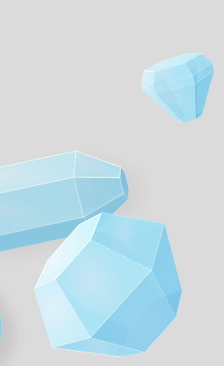The internal hexagonal structure of ice produces
pyramidal crystals in addition to ordinary plates and columns.
Pyramidal crystals have the same central hexagonal shape as plate or
column crystals but six sided pyramids cap the middle prism section.
The pyramids can be truncated and 18 different habits or variations are
possible having from 12 to 20 faces.
All the crystals have the same pyramidal angle
where the faces slope at 28° to the crystal ‘c’ axis.
| |
These
are the faces with Miller indices like
{10-11}. Higher order faces
of greater slope are, in principle, possible but unlikely. However,
elliptical halos can currently only be explained by hypothesising
very flat pyramids with improbably large Miller indices. |
Pyramidal crystals tend to be aerodynamically rather rounded and are
therefore less well aligned than plates and columns. Many different light
paths are possible through them and produce multiple circular halos
called the 'Odd radius halos'.
More rarely, the crystals are better aligned and form pyramidal
plate and column arcs.
Pyramidal crystals are not so rare as previously thought. Search carefully
for their halos whenever the skies look favourable
|

![]() Home
Home






